- Home
- Thomas H. Cook
Blood Echoes Page 11
Blood Echoes Read online
Page 11
It was after that, Coleman continued, that things had begun to get out of hand. Realizing that if Jerry and Ned Alday were allowed to live, he and the others would never be able to get out of Georgia, Coleman had finally decided to kill them. After that, it was only a question of how to do it. Finally, he’d marched one man into each of the bedrooms at the opposite ends of the trailer, forced each of them to lie down on their respective beds, and shot them to death.
These murders were followed by the unfortunate arrival of Jimmy Alday, and subsequent events quickly turned into a merry-go-round of murder. “Here comes another damn tractor,” he told Angel expansively, like someone narrating a television show he’d found curiously entertaining. “And pretty soon the house is filling up on us. There wasn’t no way of getting out of there.”
After the third murder, with one body in each of the bedrooms and a third, that of Jimmy Alday, now lying facedown on the small sofa in the living room, Coleman told Angel that he’d become somewhat anxious to leave the trailer. But at that point, he said, the others had resisted his advice and had chosen to linger a while longer.
“Why is that?” Angel asked.
“Because of the woman,” Coleman replied. While Jerry Alday was still alive, he added, Carl had asked him if he were married. Alday had replied that he was, and that his wife would soon be home. He’d then pleaded with Carl not to hurt her, adding that if robbery were the motive, then the men need not wait for his wife, since she never carried more money than was necessary for her to go back and forth to her job in Donalsonville. However, the men had decided to wait anyway, Coleman added, even though he had protested the decision.
“I said, ‘Shit, I’m leaving,’” Coleman told Angel. But still the others had refused to join him.
“Why?” Angel asked.
Coleman shrugged. “Those pussy-hungry motherfuckers, they said, ‘No, stay around, wait for her,’” he told Angel. And in the end, that is what they’d done.
“So they waited for Mary Alday,” Angel asked. “That’s why they hung around?”
“Yeah,” Coleman said.
But it was not Mary who’d next arrived at the trailer on River Road, Coleman went on, it was two men in a pickup truck who’d suddenly driven into the now crowded Alday driveway. In response, Coleman said that he and the others had remained inside the trailer and watched as the two men approached its rear door. They had allowed them to open it, and only then pulled their guns and forced them to come inside.
“What’d you do to them?” Angel asked.
“We robbed them,” Coleman answered.
“Then what?”
After the robbery, Coleman replied idly, he had walked each man into the opposite bedrooms, just as he had done with the first two, and had murdered them.
A short time later, Coleman went on, Mary Alday had arrived just as her husband had said she would, her arms wrapped around a bag of groceries. For a time she was held captive in the kitchen while the men continued to burglarize the trailer. Later, while still in the trailer, Carl Isaacs had raped her, Coleman added.
Although rape had not occurred to Coleman before he saw Carl’s assault on Mary Alday, it had been enough to convince him to “get some too,” and after waiting for Carl to finish, he’d crawled on top of Mary and raped her on the kitchen floor while the others watched from various positions in the room.
Once the rapes were completed, Coleman said, Mary Alday was told to get dressed again. After getting dressed, she’d been taken to her car, where she was forced to crouch in the floorboard of the back seat while the men, now in two separate cars, Mary Alday’s Impala and Richard Miller’s Super Sport, drove her to a wooded area several miles from the trailer. There, according to Coleman, the Super Sport was abandoned, and Mary was raped again, first by Carl, then by George. After that, Coleman added, the men had “pushed her around a little bit, touched her ass and everything,” while discussing whether or not to have her run about in the woods for a time while they shot at her. In the end, Coleman said, they had finally grown tired of playing with Mary, and at that point “since I had done shot everyone else,” Coleman said to Angel, he had walked Mary a few yards further into the woods, ordered her to lie down on her stomach, and had shot her twice in the head.
And that in a nutshell, Coleman told Angel, was the way it had gone down. The story over, Coleman slouched back in his chair, took a long draw on his cigarette and smiled.
Standing only a few feet away, Angel felt his skin like a tightly drawn cord. “There are times when you really have to control yourself,” he recalled, “and watching that grin on Coleman’s face, the way he bragged about all he’d done … well, that was one of those times.”
As a narrative of the murders, Angel had to admit to himself that Coleman’s story had been plausible enough. At the same time, however, there were a few problems with it.
Coleman had told his tale in the tone of boastfulness, as if he were proud of his cruelty and brutality, and almost eager to make himself appear even more irredeemably evil than the events themselves suggested. Thus, as he watched Coleman saunter out of his office after finishing his story, Angel wondered if the narrative he’d just heard would be supported by the other Alday suspects, if Coleman would still emerge as the chief evil agent of all their deeds once the others had been led into the same room, slouched down in the same chair and told their separate versions, while he stood nearby, rigidly controlling himself again.
Although Angel might be wondering who the leader of the gang actually was, Frank Thomas was not. He’d already received some unsolicited information that left him with little doubt. Even before their capture, on the night of May 17, a phone call had come into the offices of the West Virginia State Police from a woman who claimed to be Betty Isaacs, the mother of three of the four Maryland escapees. Her tone was emphatic. “Carl is the one in charge,” she told Thomas. “And he’s a killer. He’s the only one who’s like that, but Wayne and Billy will go along to impress him.”
“She was very impressive,” Thomas remembered years later. “She knew it was her sons we were looking for, and she didn’t want any police officers to be hurt.”
And the one they should be wary of, she told Thomas, was Carl.
* * *
Within three days of the capture, Angel had plenty of confirmation for the assessment Betty Isaacs had given Frank Thomas over the phone that night, and which argued determinedly that Wayne Coleman was neither the evil chief he’d claimed to be in his initial statement, nor the agent of all six of the murders.
By that time he’d interviewed each of the four men who’d entered the trailer on that fateful afternoon. Although similar in many substantive details, the four accounts had all varied in other, equally significant aspects.
Whereas Coleman had confessed to killing all six of the Aldays, Dungee had admitted to shooting Mary Alday himself, although pointedly adding that he’d only done so because he’d feared his own murder at the hands of the others had he refused to do so.
In addition to this profound difference, there were other notable discrepancies between the two men’s stories. Not only had Dungee claimed that he had killed Mary Alday, but he said that Carl had actually murdered some of the men in the trailer, and Coleman had murdered others. According to Dungee, only Billy Isaacs had murdered no one.
Added to the contradictions regarding the actual murders, Dungee and Coleman had also told widely differing accounts of the sequence of the murders. Coleman had insisted that Mary was the last to arrive, whereas Dungee claimed that the two men in the jeep, whom Angel now knew were Aubrey and Shuggie Alday, had been the last to arrive at the Alday trailer. Mary had arrived before them, Dungee said, although, in the end, she had been the last to die.
Finally, there was Coleman himself. Although Coleman had made every effort to make himself the malignant center of the group, the man in charge, he had delivered his narrative in a rambling, disorganized manner, in the process exhibiting a level of i
gnorance and incompetence that remained highly at variance with any capacity whatsoever to lead anyone, except possibly George Dungee. Several times Coleman had appeared utterly baffled by, and out of touch with, the group’s frantic movements. His knowledge of derails involving such issues as the number and caliber of the guns used and the positioning of the bodies in the Alday trailer was at times equally hazy. Worst of all, Coleman gave the overall impression of a man totally at sea even in regard to the most rudimentary knowledge of American geography. Once, he’d actually stopped to ask Angel if Georgia were a part of Alabama, while on another occasion he had seemed to think Louisiana a county within Mississippi.
As for Billy Isaacs, his story had followed Dungee’s general description much more closely than it had followed Coleman’s. Still, in essence, it struck Angel as a self-serving version of events, one that worked utterly to exonerate Billy from having directly killed anyone, despite the fact that ballistics tests had already demonstrated that the murders had been committed using four, rather than three guns, and that one of them had belonged to Billy.
And last there was Carl Junior Isaacs. In almost every version, he’d seemed to be in charge of the group’s activities. It was Carl who’d convinced Coleman and Dungee to escape from Poplar Hill although neither man had long to wait before release. It was Carl who’d decided to pick up Billy on Old Hartford Road. It was Carl who’d wanted to head south, Carl who’d chosen the trailer, Carl who’d waited for Mary, Carl who’d been the first to rape her. Even the incidental detail that it always seemed to be Carl who was driving the cars and making such otherwise insignificant decisions as where to eat, sleep, or buy gas argued that he was, in fact, the man in charge. At every corner, it seemed to Angel, it was Carl, Carl, Carl.
But if Carl were being talked about, he certainly wasn’t talking himself, and so, as Angel prepared to make his last direct efforts in the case, he wondered if the truth would ever really be known about what had actually taken place in the modest sixty-foot trailer Jerry and Mary Alday had placed on their neatly pruned yard on River Road, or in the terrible woods six miles ways. As for Carl, he seemed determined to keep his own discussion of that day confined to a brief weather report. He remembered May 14 all right, he told Angel, but only that it was “a pretty May day.”
Chapter Fifteen
On May 24, clothed in prison uniforms and bound in shackles and handcuffs held together by large leather belts, Carl and Billy Isaacs, Wayne Coleman, and George Dungee arrived at the Seminole County Courthouse in Donalsonville. Under the protection of a massive security force, they had been brought in from four separate jails to be arraigned on what the Albany Herald had already dubbed “the most brutal mass slaying in Georgia history.”
The items in the arraignment included six counts of murder, along with an assortment of lesser charges, ranging from such very serious felonies as rape and kidnapping, through armed robbery, and finally ending in the relatively inconsequential offense of stealing Mary Alday’s Chevrolet Impala.
As they were hustled into the courthouse, the Alday defendants had only the briefest instant to glance about at the scores of spectators who silently lined the streets in front of the building. Had their eyes been able to linger on them, they would have seen precisely the kind of people Carl Isaacs would later call “the type of society I don’t like.”
It was a hardworking and religious society of predominantly independent farmers, and in a bygone age, it would have been held up as nothing less than the Jeffersonian ideal of a broad common people, virtuous and independent, the bedrock of American life.
But much had changed since Jefferson, along with a host of largely aristocratic literary agrarians, had rallied to the cause of the country folk. Almost none of it for the better. As a consequence, rather than being romanticized, rural Georgia had over a period of many years become an object of metropolitan scorn and ridicule.
As a result it had, to some extent, even come to view itself as a poor and underdeveloped backwater world, one that had long ago been supplanted by the more industrialized northern part of the state. Held in contempt by its own capital city of Atlanta, the butt of a thousand redneck jokes, Seminole County and its environs was a region in a state of siege, an area under ideological and economic assault by the larger, more sophisticated world beyond its borders. Its pace was the pace of the seasons, rather than the financial markets, and its old-time religion was an object of contempt and rebuke. As to its marginal, no-frills lifestyle, every television program and motion picture declared it flat and lusterless, if not entirely irrelevant.
As a people then, Seminolians were portrayed by the outside world as not so much rooted in the land as helplessly trapped by it, their customs and beliefs less quaint than anachronistic. Consequently, the ordinary respect that was generally accorded to the working world—or that had been forced upon it in the past by the pride and power of industrial trade unionism—was denied to the people of Seminole County by a combination of their limited economy, closed ideology, and undramatic geography, along with the cultural aridity that was the inevitable result of everything else. “What did they ever do?” Carl Isaacs would later ask about the Alday family. “No one would have ever paid any attention to them, if I hadn’t come along and killed them.”
Isaacs’ cruel question was merely the latest expression of an attitude the people of Seminole County had heard and felt before. Who are we? Nobody. Though we help to feed a world vastly larger than our own. Though we grow and cut the timber for its houses and its paper. Nobody. Though we do no harm—perhaps because we do no harm—we are nobody.
Under such conditions, it could be expected that the four men from Maryland would come to symbolize in the most graphic and horrendous manner the violation from outside that the county had been feeling for as long as anyone could remember. They were not only Yankees, but urban Yankees from cosmopolitan Baltimore who had invaded the region much as General Sherman had a hundred years before, destroying a helpless civilian population, killing wantonly and without regard, then moving north again, leaving everything behind in ravaged disarray.
Year after year, the people of Seminole County had been made to feel inferior, had been shunted aside and dismissed as hicks and rednecks who were little more than the farm animals the greater society used to plow its fields. Now they had within their grasp the living embodiment of that other world which had so long regarded them with disdain, so long offended and degraded them. Now, at last, there was a chance to get even, actually to see the face of the enemy, a treat few people wished to miss on the morning of May 24 when the Alday defendants arrived in Donalsonville.
Thus, dressed in their everyday work clothes, they had begun gathering early that morning, first in small knots, then spreading out along the small courthouse square until it was entirely filled. Carefully kept at a distance from the courthouse itself, they had nonetheless insisted on making their presence felt. Although they did not hoot or jeer, their stern, unsmiling faces testified to the outrage that had been sweeping the community since the murders.
For although this was their first appearance in Donalsonville since the murders, the defendants had come to occupy the minds of the local people with an intensity unprecedented in the region’s history. In fact, so much outrage had already been voiced in the community that on May 24, only ten days after the killings, the Donalsonville News had taken pains to point out that, although profoundly offended, the people of Seminole County remained law-abiding, and thus capable of rendering the accused a scrupulously fair trial. “The four suspects cannot get a passive, indifferent trial here,” Bo McLeod, the newspaper’s editor, wrote, “but they could get a fair one.”
A fair trial was all the Alday family expected for the men who had killed their kindred so wantonly. Still numb from the catastrophe that had overwhelmed them, they stayed to themselves in the weeks following the murders, often gathering together on Sundays in the family homestead as they had done in years past. “We just wanted
to be quiet,” Nancy remembered, “to be together and go through it the best way we could.”
But the unearthly quiet that pervaded the homestead on River Road during those interminable Sunday afternoons when the family sat in stricken silence, or shuffled back and forth among the home’s varied, and now largely unoccupied, rooms, was in marked contrast to the boisterousness and vituperation that had steadily engulfed their surrounding community.
Sitting at the nearly empty dining room table, or in the numerous unoccupied chairs that bedecked the house’s expansive front porch, Ernestine, Nancy, Patricia, and Fay, the last of the Alday women who remained in Donalsonville, could sense the rising tide in every newspaper that fell into their hands. Reading them was an agonizing experience, compounded by the fact that it would have been impossible to find a local paper that did not remind them of the murders, as well as of their community’s ferocious reaction toward the four men accused of committing them.
The Camilla Enterprise stated what it considered to be that community’s feelings in no uncertain terms. “We kill rattlesnakes,” the paper declared in a reference to what could hardly be mistaken for anything but the Isaacs brothers and Dungee. The Bainbridge Post-Searchlight was even more emphatic in its expression of disgust. After noting that in earlier editorial parlance American newspapers had often declared that a particular criminal “should be shot down like a dirty dog,” the paper went on to say that in the case of the Alday killers, “such a comparison would be speaking disparagingly of dogs.” The Houston Home Journal wrote that the Alday murders served as the best argument imaginable for the reinstatement of the death penalty. For its part, the Baxley Banner News dropped even the pretense of presumed innocence. Declaring that the case proved the need to extend statewide arrest powers to the Department of Investigation, the paper noted specifically that such powers were needed “to track down the escaped convicts who brutally killed six members of the Alday family,” so that they could be “brought back to Seminole County to face the life-long friends and relatives” of the people they had murdered.

 The Interrogation
The Interrogation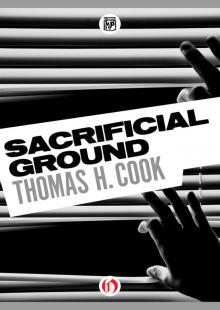 Sacrificial Ground
Sacrificial Ground The Fate of Katherine Carr
The Fate of Katherine Carr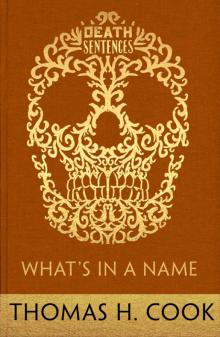 What's In A Name
What's In A Name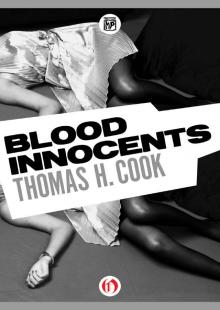 Blood Innocents
Blood Innocents Peril
Peril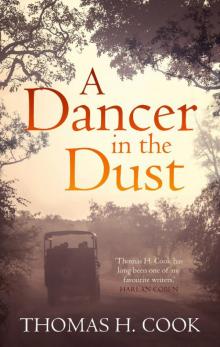 A Dancer In the Dust
A Dancer In the Dust Breakheart Hill
Breakheart Hill The Chatham School Affair
The Chatham School Affair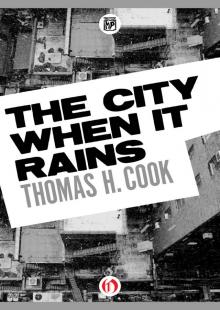 The City When It Rains
The City When It Rains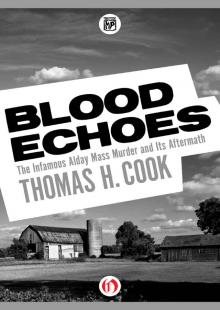 Blood Echoes
Blood Echoes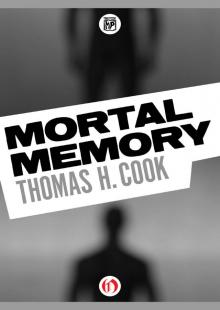 Mortal Memory
Mortal Memory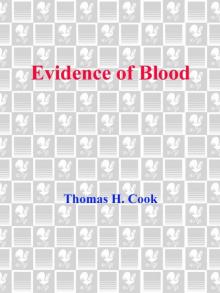 Evidence of Blood
Evidence of Blood Into the Web
Into the Web The Crime of Julian Wells
The Crime of Julian Wells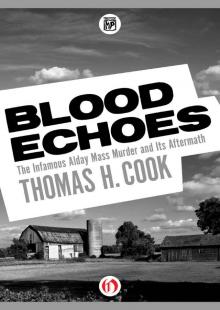 Blood Echoes: The Infamous Alday Mass Murder and Its Aftermath
Blood Echoes: The Infamous Alday Mass Murder and Its Aftermath Night Secrets
Night Secrets Places in the Dark
Places in the Dark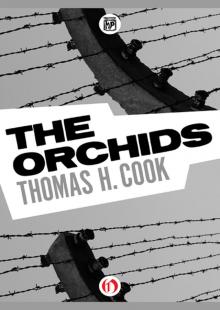 The Orchids
The Orchids Elena
Elena Streets of Fire
Streets of Fire Instruments of Night
Instruments of Night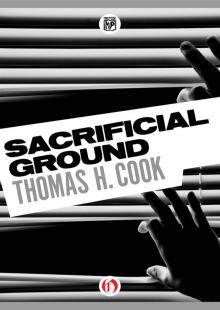 Sacrificial Ground fc-1
Sacrificial Ground fc-1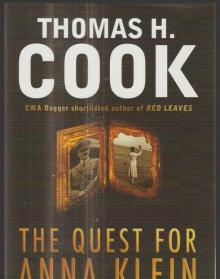 The Quest for Anna Klein
The Quest for Anna Klein Sandrine's Case
Sandrine's Case Quest for Anna Klein, The
Quest for Anna Klein, The Fatherhood
Fatherhood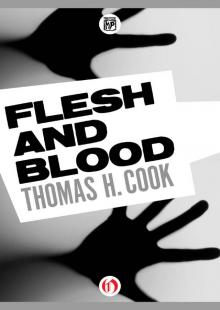 Flesh and Blood
Flesh and Blood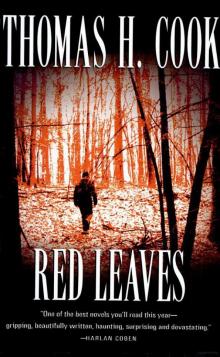 Red Leaves
Red Leaves